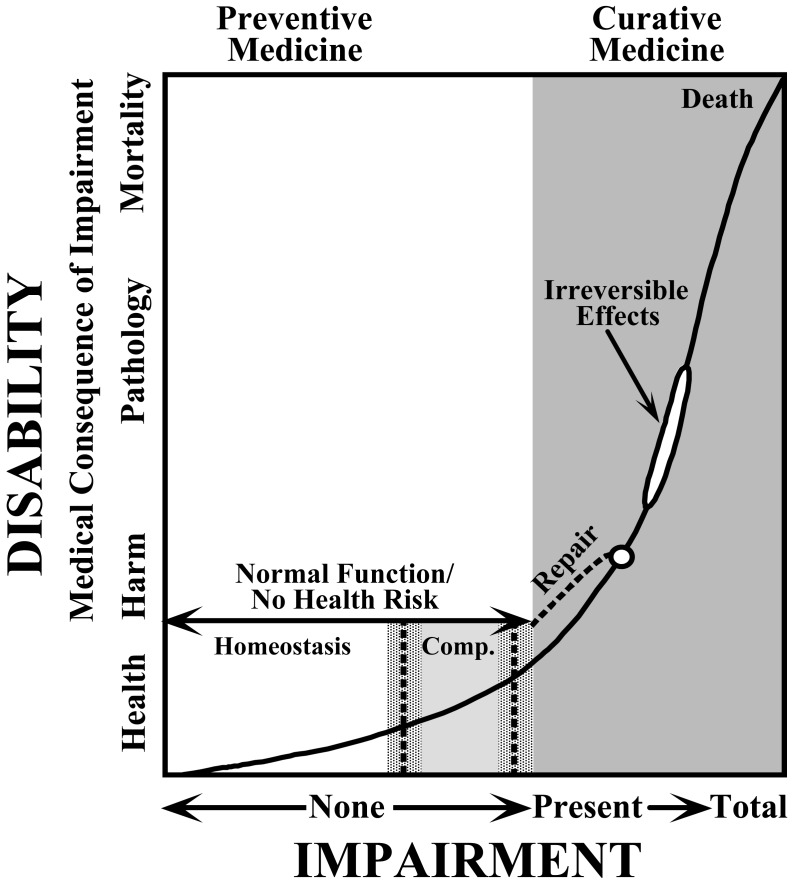Fig. 1.
Theodore Hatch’s scales of biological impairment and functional disability as the conceptual basis for the promulgation of TLVs115). Impairment due to excessive industrial exposures is viewed as a precursor of disability—reversible and irreversible pathology, and death in the extreme. Curve extending from bottom left corner to upper right corner depicts the potential level of disability relative to the severity of biological impairment stemming from xenobiotic exposures. Exposures not exceeding the capability of inherited regulatory homeostatic and compensatory mechanisms (labeled ‘Comp’), whose respective upper limits are denoted by two short vertical hatched lines at the mid-center and right-center portions of the lower horizontal axis, are unlikely to provoke impairment or disability for the vast majority of workers. This perspective is consistent with the tenets of preventive medicine. Exposures beyond the biological limits of tolerance that increase the risk for biological impairment and disability–pathology (gray shading of the far right-hand portion of figure)–entail curative medical interventions. Accordingly, TLVs that respect normal homeostatic and compensatory processes avert impairment and disability. New to Hatch’s original 1968 figure is the depiction by stippled shading of arbitrary width of the predictable-in-time 24 h variation of the limits of involved inherited homeostatic and compensatory coping mechanisms; the shading thus symbolizes the potential magnitude of the day/night difference in the vulnerability of shift-workers to xenobiotic and other workspace stressors. Figure is a modification of both Hatch115) and Smolensky et al24).

